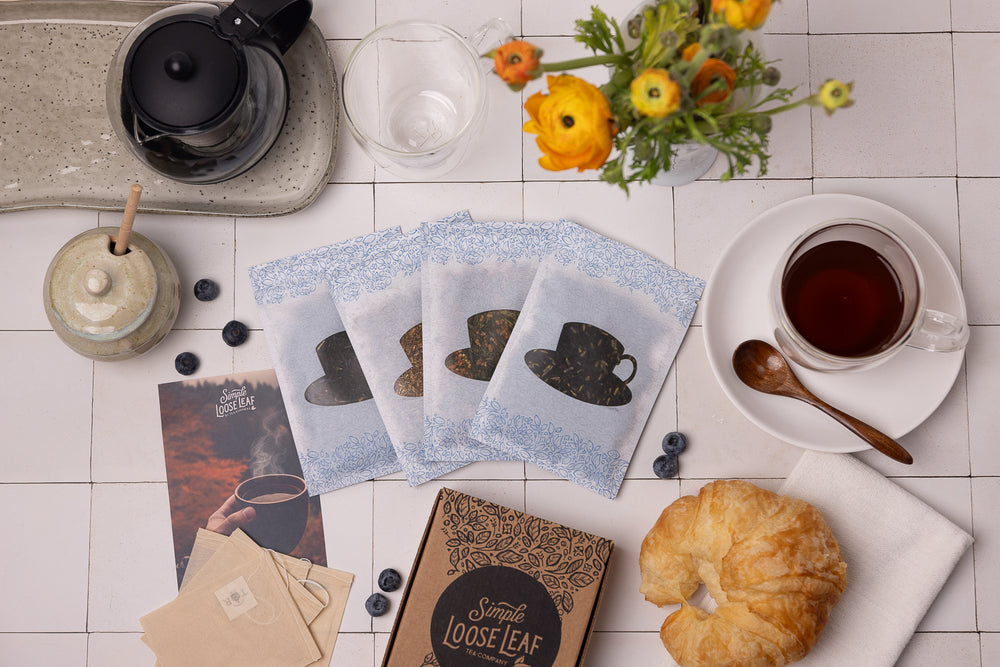How to Brew Black Tea
Black tea is one of the easiest tea types to brew. Even though it's the strongest type, if brewed correctly, it will never be unpleasantly bitter. Every tea region produces tea with special character, flavor and color, and to really understand them, it's important to know what temperature is best suited for your leaves. Learn what is the perfect water temperature for brewing different types of black tea.
How to brew black tea
You can brew black tea by using either standard western method or eastern brewing technique. Some teas are more suitable for regular brewing, while others may reveal exceptional notes only when brewed multiple times. As a general rule, you can steep all teas except Chinese using western method guilt-free, and know that you will get the best possible cup. On the other hand, some Chinese black teas might give more than 5 excellent infusions, each with different notes. Traditional blends and flavored black tea are usually good for only one brewing. Both steeping time and water temperature will influence how many cups of tea you will get from loose leaf teas. Avoid re-steeping of black tea in tea bags, as they are intended for one use only. 2-3 grams of tea will be enough for a great tasting cup.Best black tea temperature
First tea in the life of a tea drinker is usually black. It’s easy to brew, tastes great with both milk and sugar, and it's a great healthier replacement for coffee. Pouring boiling water over a tea bag is often the first contact many of us had with tea. With loose tea things get more complicated. Although you can still brew all of them with boiling water and enjoy a cup of very decent tea, some of them might surprise if you slightly change your brewing time and temperature.Darjeeling black tea
Unlike other black teas, Darjeeling is not fully oxidized and will become very bitter if you brew it with boiling water. Different flushes of Darjeeling tea require different steep time and water temperature. As a general rule, use water temperature of around 185°F to 194 °F and steep for 3 minutes. Use cooler water for spring harvest and re-steep.Assam black tea
Assam tea is generally a very strong, robust, malty tea, very easy to brew and perfect for drinking with milk. This makes it a common choice for new tea drinkers. Although Assam is often described as bitter and very robust, it can be lightly sweet, with notes of chocolate and nuts. Brew Assam tea for three to five minutes with water temperature of around 194 °F to 203 °F. Although rare, some Assam teas can give two good infusions.Yunnan black tea
Yunnan black teas usually have a lot of golden buds and are sweeter than other black tea types. You will be able to use the same leaves for at least 3 times. High quality Yunnan teas are less likely to be bitter and leave an amazing sweet aftertaste. The best water temperature is around 194 to 205 °F. Steep for 2-3 minutes.Ceylon black tea
Ceylon teas may be closer to Assam than Darjeeling teas in taste, but give a better cup If you brew them like Darjeeling leaves. Use water of around 185°F to 194 °F and steep for 3 minutes. Some Ceylon teas can be re-steeped for 2-3 times.English Breakfast tea
As English Breakfast and Earl Grey are western-style blends, the best way to brew them is using near boiling water and longer brewing times. They usually give one great infusion, but you might be able to re-steep some of them.Pu’erh tea
Technically, pu’erh is not a black tea, but the brewing temperatures are similar. Ripe pu’erh can handle boiling water very well. It can give up to 10 great infusions using short steeping time, or you can steep the leaves for 5-10 minutes for a single brew. Ripe pu’erh will never be bitter. On contrary, raw pu'erh can be very bitter. You may still use near boiling water, but steep time should be only a couple of seconds.7 Tips for brewing loose leaf black tea
- Preheat the teapot Preheating the teapot is essential for developing the perfect flavor. Preheated teapot will keep the water temperature high throughout the brewing. Besides, it will bring out all the scents in dry tea leaves and allow you to fully enjoy your cup with all senses.
- Never use boiling water Bring fresh water to boil, but let it cool down for a couple of seconds first. It’s OK to use cooler water for making black tea, so experiment with temperatures to find your perfect flavor.
- Use less leaves With black tea, one teaspoon will almost always be enough, especially for western style brewing.
- Use small broken leaves for more caffeine Tea with broken leaves will release caffeine more easily. Most breakfast and awakening blends use small broken leaf grade tea.
- Clean the teaware immediately Black tea tannins will cause stains, so clean your teaware immediately after using. Teaware should generally not be washed in a dishwasher.
- Always use glazed teapots If you cannot afford one teapot per type of tea, choose the glazed one. Unglazed teapots will collect flavor from previous loose leaf teas, especially strong black teas or flavored teas.
- Never add milk or sugar directly to the teapot Strain the leaves first.
- If your tea contains some greener or whiter leaf parts, use a lower temperature This is a sign that your tea is not fully oxidized. You can guess the oxidation level by looking at used wet leaves. Fully oxidized leaves will have a lighter or darker brown color.
- Use double the amount of leaves for iced tea For making black iced tea, use more leaves than for a regular cup of hot tea. Otherwise, flavor will get lost easily.
More from:
SLL




Leave a comment